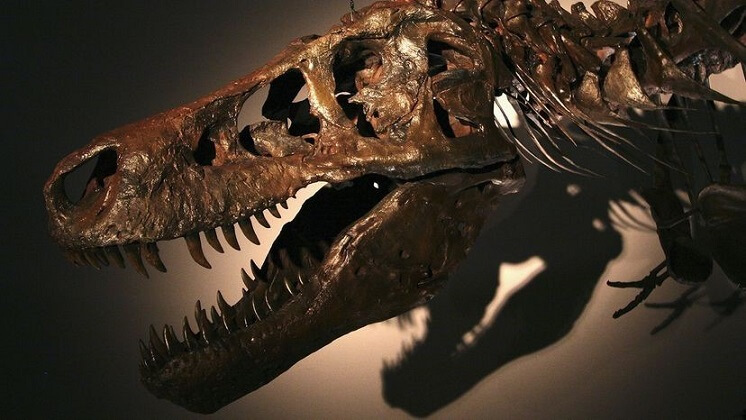
T. Rex Didn’t Kiss & Tell, But May Have Had Lips
The world's largest Tyrannosaurus rex, named Sue after fossil hunter Sue Hendrickson, who discovered the skeleton in 1990, had massive teeth, but we won't know about lips until a mummified T. rex is found.
By: Thomas Harlander | How Stuff Works
Tyrannosaurus rex was not a good kisser. Or so we always thought.
Depictions of the tyrant lizard king typically feature a beastly phalanx of teeth protruding from its closed mouth. It’s an image made most famous by the “Jurassic Park” movies, and it certainly makes the reptilian monster we all know and fear more menacing to look at. But that image might not be accurate after all.
A study, published March 30, 2023 in the journal Science, postulates that the T. rex and its fellow theropod dinosaurs actually had lips — or, as the study’s authors put it, “extraoral tissues (gingiva and labial scales).”
Paleoartists often depict theropod dinosaur mouths as analogous to those of alligators and crocodiles; enormous protruding teeth are a distinctive feature. Yet by comparing the ratio of tooth size to skull length with that of lizards like the komodo dragon, the researchers behind this study concluded that T. rex teeth weren’t necessarily too big to be covered by lips.
Were T. Rex Lips More Crocodilian than Dinosaur-like?
The authors bolstered their claim by comparing the teeth of a close T. rex relative, the Daspletosaurus (which has yet to be featured as an adversary of Chris Pratt), with those of an American alligator. While the enamel on the outer side of an alligator’s teeth tends to wear down quickly due to exposure to the elements, the enamel of the Daspletosaurus tooth evidenced no such pattern. This suggests the possibility that the dino’s teeth were protected behind lips.
The last piece of evidence the study relies on is the similarity between certain features of theropod dinosaur skulls and the skulls of lipped lizards like iguanas. While lipless crocodiles and alligators have small holes (called “dome pressure sensor pores”) over the entirety of their snouts, lizards like iguanas have larger holes (called “foramina“) aligned above their teeth. Theropod dinosaur skulls are more similar to the latter, suggesting that their facial structure was closer to that of lipped lizards.
Case closed? Well, as with everything dinosaur-related, palaeontologists draw their conclusions based on ancient and incomplete data, and other dino scholars aren’t so sure about the whole T. rex lips situation.
Would Exposure Have Damaged T. Rex’s Teeth?
Thomas Car, a vertebrate palaeontologist who’s studied theropod facial structure, for instance, told Science that he didn’t find the study persuasive. His own findings indicate that theropod snouts were tough, scaly and devoid of soft tissue — and thus, when it comes to lips, more closely resemblant of crocodile snouts. It’s also unclear whether exposure to the elements would have meaningfully damaged the teeth of T. rex, as the study suggests. If the sceptics are correct, the T. rex might have been perpetually smiling for the camera after all.
This wouldn’t be the first time palaeontologists and paleoartists have revised their working draft of what the T. rex‘s mouth looked like — in fact, in the 1920s and ’30s tyrannosaurs were often depicted with lips. Nor will this be the last contentious debate about a dinosaur’s actual appearance. Was the T. rex a feathered dinosaur like its much smaller relative Dilong paradoxus? Until a mummified fossil of a Tyrannosaurus is uncovered, the mystery of the iconic dino’s actual appearance will remain lost to time.
Now That’s Interesting
American alligators can go through some 3,000 teeth in their lifetimes, but it took the T. Rex around two years to replace a single lost tooth.
* * *
READ MORE: A Dinosaur Killed On The Day of The Fatal Asteroid May Have Been Discovered
Read more on The Beasts: Dinosaur Bones Discovered In The Great Pyramid of Giza
Liked it? Take a second to support Collective Spark.
We’d love to hear from you! If you have a comment about this article or if you have a tip for a future Collective Spark Story please let us know below in the comment section.
